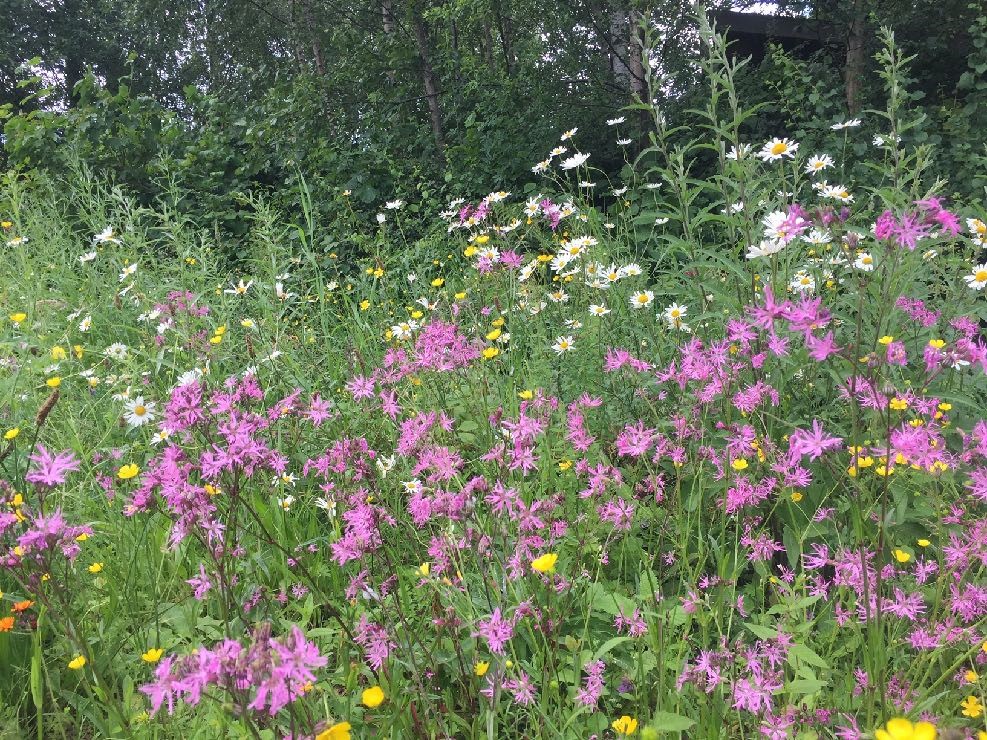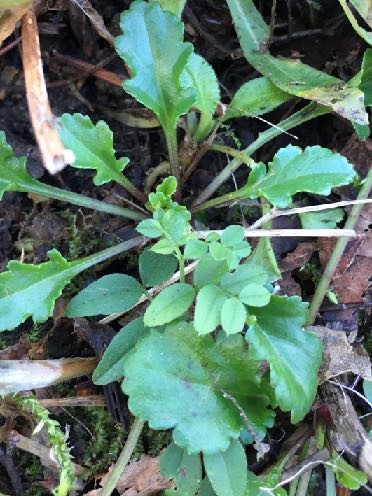Towards the end of winter, one of the many jobs to tackle in the Gardens is cutting down the old foliage and seed heads from the flowery meadow. These have been left over winter to provide food and shelter for wildlife, but also to enjoy and appreciate the turning of the seasons within the gardens, the architectural beauty of the seedheads, and the subtle tones of autumnal colour.

Now we want to remove the fallen leaves, mosses and old growth to make way for the new seedlings. Using the green tracking allows us to work through the meadow without compacting the soil or damaging the new growth; old scaffolding boards or planks of wood work just as well.
This is a joyous task, particularly on a day when you begin to feel a hint of warmth in the sun. Spotting tiny seedlings and imagining the flowers to come is magical, and a challenge to identification skills!

Cowslip 
Ox-eye Daisy and Meadow Vetchling
As the days lengthen and the bare soil warms, the plants grow quickly. No two years are ever the same and it’s so exciting to watch and discover which plants have survived, or flourished, or need a bit of intervention later in the year!

There are many descriptions of ‘meadows’ in gardening: wildlife meadows where only native wildflowers are used recreate a particular natural habitat; annual meadows or mixes of arable ‘weeds’ such as poppies, corn marigolds and cornflowers; pictorial meadows of colourful plants taken from all over the world. These all require some work, and have varying maintenance regimes. If you have ever scattering some meadow mix seed or throwing a ‘seed bomb’ and been lucky enough to end up with a flowering meadow year after year, then I’d like to know your secret!

Our meadow began by clearing the site then sowing a ‘bee and butterfly’ mix from Scotia seeds. This was quickly swamped by vigorous grasses so we found that the most effective method was to supplement this by growing some plug plants, sowing seed in autumn then planting out in Spring, to give us variety. By spending time studying the plant groupings, tinkering and tweaking the plant mixes, taking out some that threaten to dominate the more delicate flowers eg oxeye daisy or greater knapweed, sowing seeds of desirable plants such as Ladys Smock to attract Orange tip butterflies or Birdsfoot trefoil for the Common Blue butterfly, we can continually experiment and learn.

Including a range of flower shapes, colours and sizes makes for a dynamic and interesting patch, but it also caters for the varying needs of the insect populations; long tongued bumblebees can access nectar in vipers bugloss, larger insects such as the garden bumblebee will appreciate the big landing pads of the umbellifers and oxeye daisies. We tend to plant out native Scottish wildlfowers, but we are not too strict about it, and I don’t think the bees, beetles and butterflies mind.

Paula, Head Gardener





